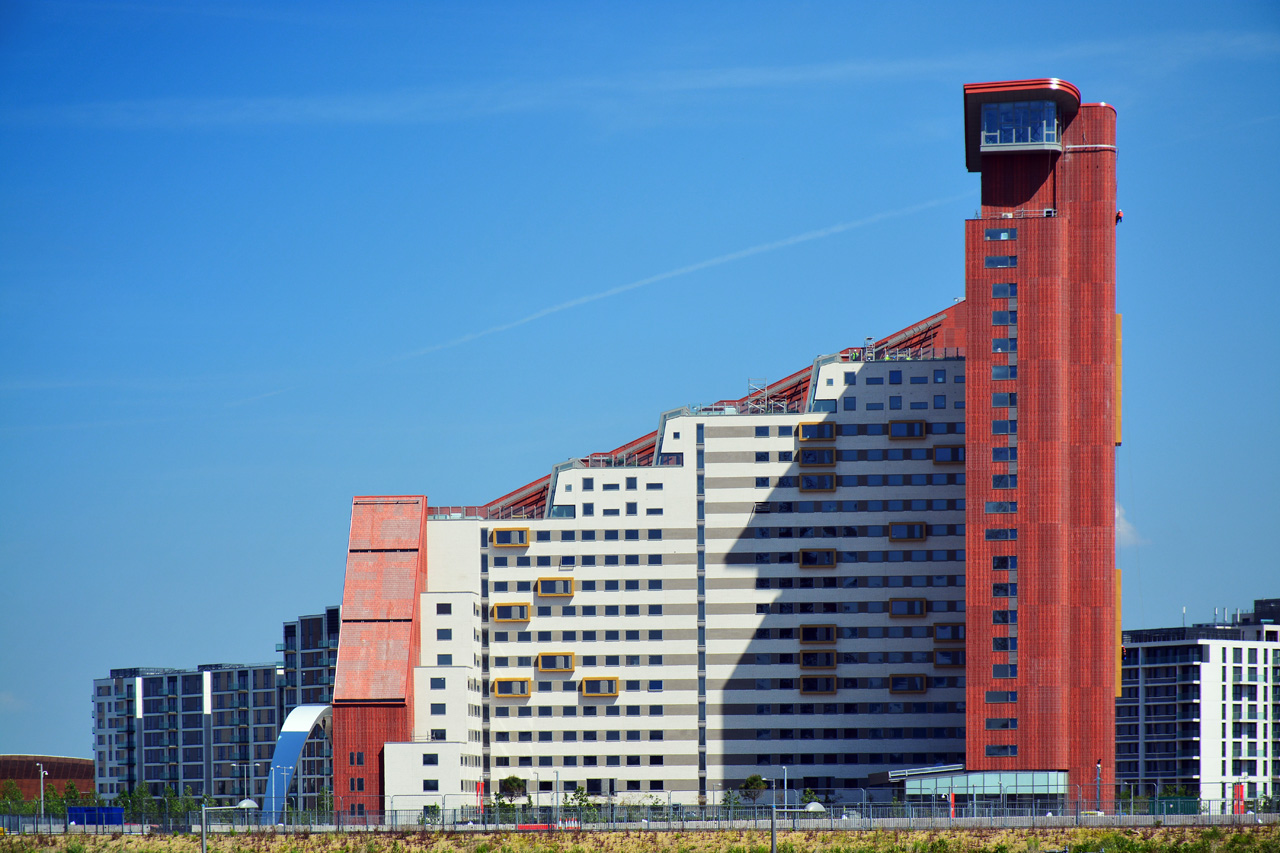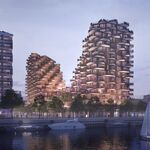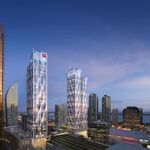While Leadership in Energy and Environmental Design (LEED) has gained popularity worldwide as the chief method of assessing, rating, and certifying the sustainability of buildings, the ubiquitous system took inspiration from an antecedent scheme established in the United Kingdom. Building Research Establishment Environmental Assessment Method (BREEAM) was created in 1990 as a tool to reduce the negative impacts of construction and development on the environment, encourage the adoption of sustainable building practices, and implement a framework for the certification of environmentally friendly structures.
 Unite Stratford One in London received an 'Excellent' rating, image by Flickr user George Rex via Creative Commons
Unite Stratford One in London received an 'Excellent' rating, image by Flickr user George Rex via Creative Commons
Both methods have the same objectives but adopt different means of attaining them. BREEAM employs independent, expert, licensed assessors who examine the building against established scientifically based credit criteria, covering a wide range of issues in multidisciplinary categories such as energy and water use, health and well being, pollution, materials, transport, and waste. The assessors then report directly to the parent company Building Research Establishment (BRE), a former UK government entity that has since been privatized, which will validate the assessment and issue a certificate of 'Pass,' 'Good,' 'Very Good,' 'Excellent,' or 'Outstanding.'
The system is markedly different from the method utilized by LEED, which does not directly collect the evidence. Rather, the individual design team is given the responsibility of amassing the data and sending it to the US Green Building Council, which then evaluates it and issues the certificate accordingly. Whereas LEED bases its thresholds on percentages, BREEAM depends mostly on quantitative standards.
 Heuston South Quarter in Dublin achieved an 'Excellent' rating, image by Flickr user William Murphy via Creative Commons
Heuston South Quarter in Dublin achieved an 'Excellent' rating, image by Flickr user William Murphy via Creative Commons
In contrast with LEED, BREEAM initially had no mandatory post-construction review. Under the rules that existed prior to 2008, most buildings were only evaluated at the design stage. This narrower focus has expanded and evolved in recent years to encompass the whole life cycle of buildings, from planning to use to refurbishment. And while LEED has become the clear worldwide frontrunner, at least when measured by the number of certified buildings in its portfolio, BREEAM remains the de facto environmental performance scheme in the UK. The geographic scope of BREEAM has widened since its inception, with the method being used in more than 70 countries, particularly in Europe, where numerous country-specific BREEAM schemes have been set up. However, LEED is gradually penetrating these national markets.
Have any other construction and development related terms that you would like to see featured on Explainer? Share your thoughts and questions in the comments section below!

 1.2K
1.2K 














































